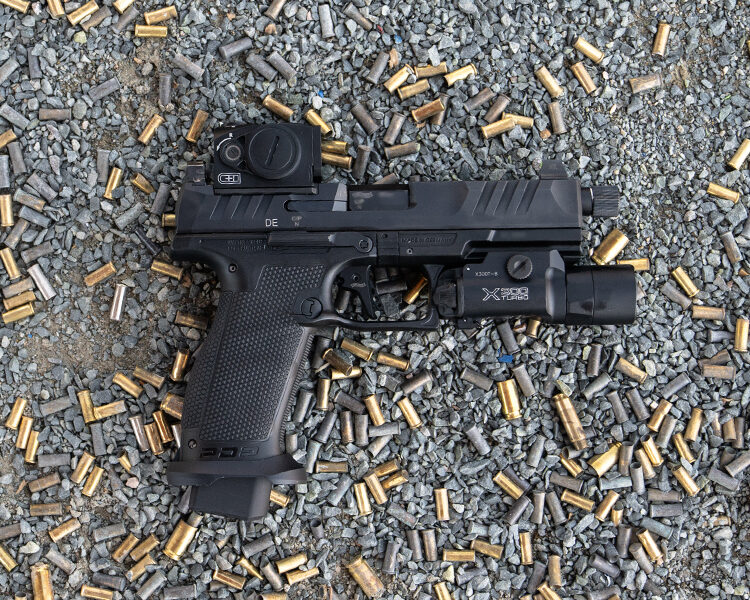Enclosed emitter pistol optics are all the rage. If you believe everything you read on the internet, they’re practically indestructible and buying anything else is tantamount to negligence. By that logic, you can tell how serious a shooter is by how blocky their red dot is.
Of course, that’s a stretch. Enclosed emitters aren’t the end-all-be-all but they do have their merits.
After being priced out of reach for many of us, more affordable options are finally here. One of them is the C&H Precision Duty.
Does the Duty leave open emitters in the dust? Can it hang with premium mailbox-style optics? I brought one to the range to find out.
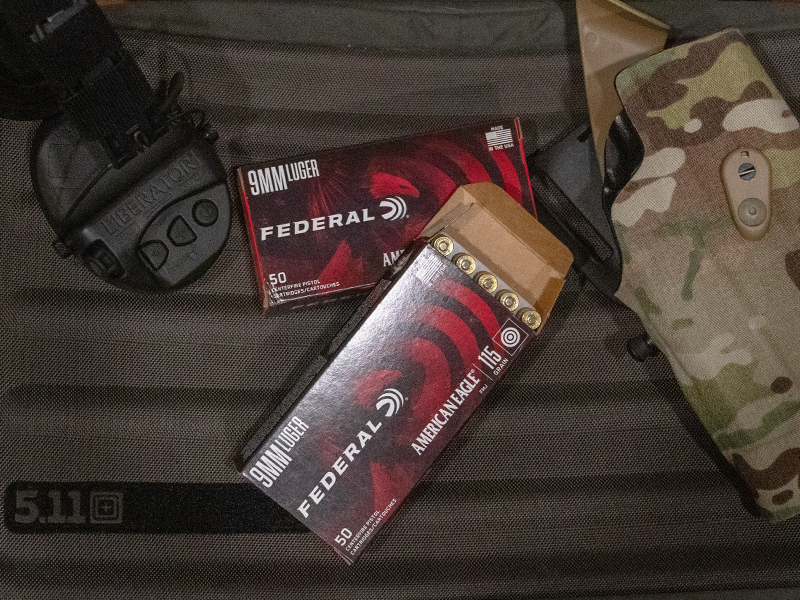
C&H Precision Duty By The Numbers
C&H Precision markets this optic for everyday carry and competition use in addition to duty. But what does this optic have to offer the average pistol shooter?
Take your pick from three reticle options: a three-MOA red dot, a three-MOA green dot, or a red multi-reticle. The latter can cycle through the dot, a 33-MOA outer ring, or both. I tested a Duty with the multi-reticle.
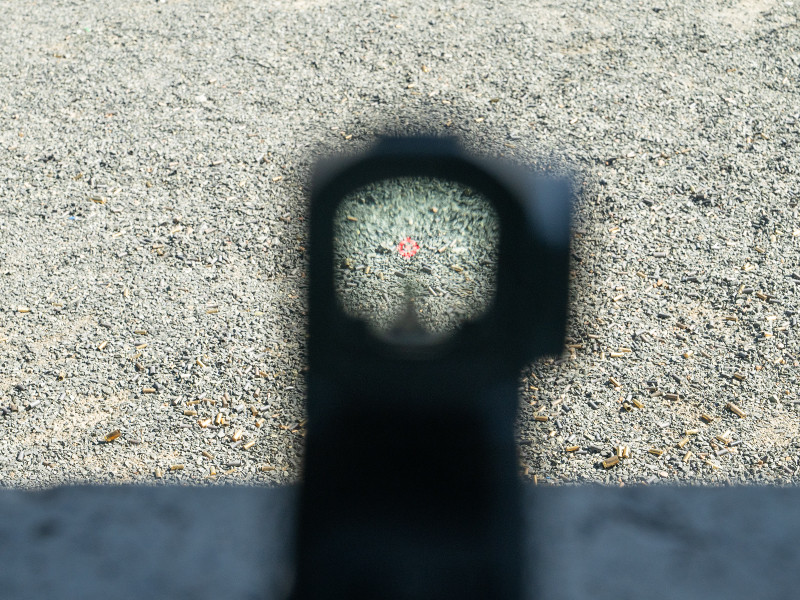
There are a total of 10 brightness settings, and the lowest two are night vision-compatible.
Power comes from a CR2032 battery that powers down automatically after five minutes of inactivity. A shake-awake function returns the Duty to the last setting used. You can also shut it off and turn it on manually, at which time it will again revert to the last setting you used. C&H lists a claimed battery life of 50,000 hours but your use of the optic will determine the results you actually see.
Remember that batteries are cheap, and looking through a dead optic at a critical moment is no good. Swap out your battery early and often.
Like most enclosed-emitter pistol red dots, the Duty uses the ACRO footprint. C&H makes mounting your optic incredibly easy. The manufacturer supports this optic with adapter plates for Sig Sauer, Smith & Wesson, Staccato, Walther, and even long guns. Want to mount a Duty on your Ruger 10/22 or Mossberg 590? C&H has you covered. There are offset Picatinny mounts, too.
You can buy the Duty from C&H’s website for a starting price of $324.95. For reference, the Aimpoint ACRO P-2 has an MSRP of $599 and the Trijicon RCR has an MSRP of $849. Quite a few enclosed emitters are hitting the market these days, but the Duty is decidedly on the affordable end of things.
Initial Impressions
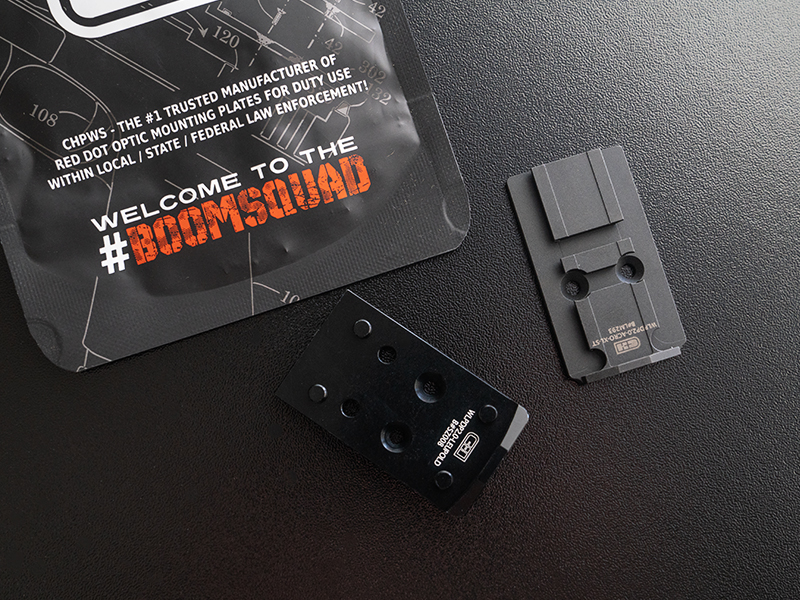
I’m not one for unboxing videos, but I’ll concede that a company tells you a fair bit about how it does business by the way it ships its products. The Duty arrived in a hard presentation case with a battery and hand tools, and I was able to order an adapter plate that C&H machined specifically for use with the Duty and Walther PDP.
Setting up the optic was self-explanatory so you’ll hardly need the instructional videos C&H provides. The side-opening battery compartment is easy to access and doesn’t require you to re-zero the optic every time you change the battery. Tightening the optic down on the ACRO adapter plate couldn’t be simpler.
There’s a notch rear sight built into the optic that serves as a backup if your pistol doesn’t have suppressor-height irons. Obviously, using it with a factory-height front sight will raise your point of impact, so consider that a last resort in close-range engagements.
Testing, Testing
Before we get to how an optic performs, we need to know that it can function in the real world. Can it go from a warm patrol car to the freezing outdoors without malfunctioning? How about the opposite?
For my first test, I placed the Duty in my freeze at 0° F for an hour. Going in was no problem; the glass stayed perfectly clear. Coming out will always produce frozen exterior condensation (think frosty beer mug). In this case, I also observed a small amount of accumulation inside the optic.
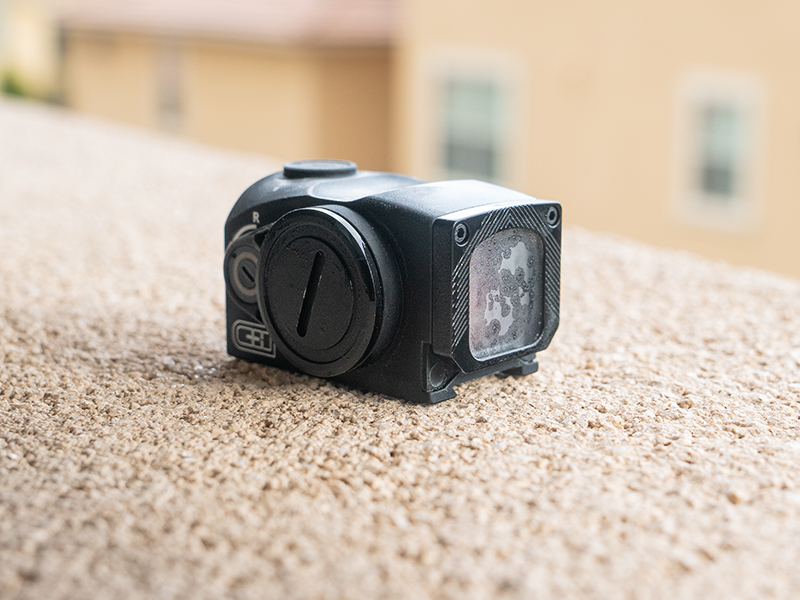
Within a few seconds, the outer condensation had dissipated enough for the optic to be usable. A few minutes later, the internal condensation evaporated and left the glass clear once again.
On to the fun part.
Zeroing the C&H Duty is straightforward. Each click of the adjustment dials equates to one MOA. At pistol distances, each click is effectively a quarter inch at 25 yards. C&H provides a small flathead screwdriver for this process.
As long as you keep targets within 33 yards, you shouldn’t observe any parallax through the Duty.
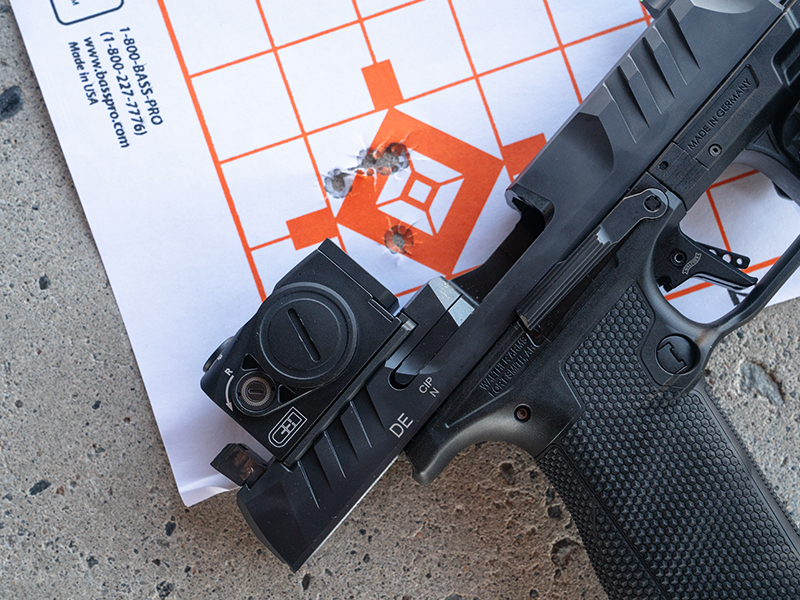
I always start with slow-fire groups of five to get a sense of a pistol’s accuracy and make sure the optic isn’t working itself loose. The Duty and its PDP partner performed well.
As I picked up the pace with rapid strings of fire, controlled pairs, hammer pairs, and failure to stop drills, I found the Duty intuitive to point and shoot. It’s a physically large optic but that didn’t bother me in terms of weight or field of view once I was up and running.
At close distances, using the multi-reticle or just the outer ring makes life easy. It’s the option to buy.
When I’m working on speed, I don’t try to place the red dot precisely on a tiny bulls-eye. Instead, I send the round as soon as I see a red blur appear over the center of a silhouette target. This technique is one of the reasons some competitive shooters prefer an eight-MOA dot instead of, say, a three-MOA dot.

I don’t have a lab and I don’t purposely break the products I test so I can’t say exactly how this stacks up against any specific optic, but I shot as well with the Duty as I usually do.
Would I trust this enclosed emitter red dot to home defense and range duty? You bet.
Is the C&H Duty Worth Buying?
Making expensive technology affordable is a double-edged sword. On one hand, it’s great to make gear accessible to a wider audience. On the other, cutting prices generally requires cutting corners.
Which is it in the case of the C&H Duty?

This optic does not outperform alternatives that cost twice as much (or more) but it does a decent job. No, the glass isn’t as clear as the ACRO P-2’s, and no, I don’t think it is going to capture Trijicon’s reputation for apocalyptic durability. But those aren’t fair comparisons.
I shot well with the Duty and I’ve seen others do the same. For less than $400 MSRP, it’s a solid pistol optic.
Unless you torture your gear for fun, I doubt you’ll ever experience a hiccup with this optic. Go ahead and use it for home defense, range days, and competition. Depending on what “duty” means to you, it could be a perfectly viable option for that, as well.





